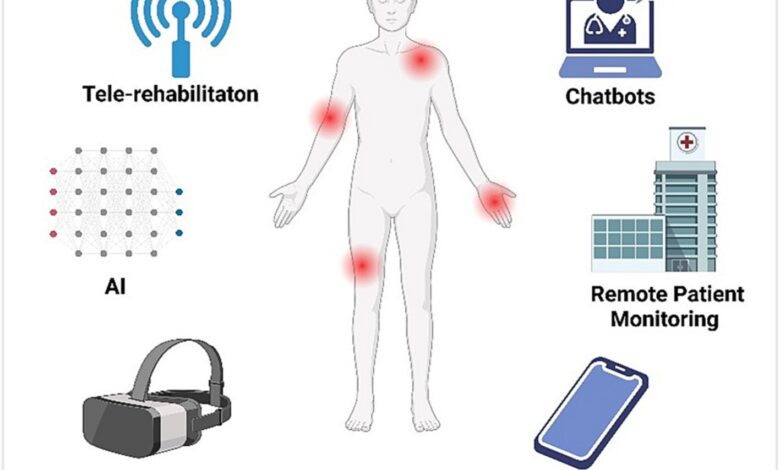
Neuropathy affects millions of people worldwide, often beginning subtly with tingling in the fingertips or toes before progressing to pain, weakness, or complete loss of sensation. Traditionally, these symptoms were tracked only through patient reporting and physical exams. Today, however, artificial intelligence (AI) and advanced health technologies are changing how we recognize, diagnose, and manage the full spectrum of neuropathy symptoms.
Early Sensations: Smart Sensors Spotting Tingling And Numbness
The first signs of neuropathy, pins-and-needles sensations or unexplained numbness, are easy for patients to dismiss. These subtle changes may raise the question: what causes numbness in the first place? In neuropathy, damaged nerves struggle to send accurate signals to the brain, leading to odd, unexplained sensations that can disrupt daily routines. Wearable technologies and AI-driven health monitoring apps now make it possible to detect these subtle changes earlier. Smart socks, gloves, and wristbands equipped with biosensors can track nerve responses in real time, sending alerts to patients and clinicians when unusual activity occurs. By analyzing these data streams, AI systems can flag patterns that humans might overlook, leading to faster recognition of nerve dysfunction.
Progression To Pain: AI-Powered Pain Mapping
When neuropathy advances, it often brings sharp, burning pain or hypersensitivity. Analysis of wearable device input, patient-reported data, and even face recognition of pain emotions are all being done more and more with machine learning methods. These systems help quantify pain levels more objectively than traditional surveys. In telemedicine settings, AI algorithms can assess changes in a patient’s movement or posture that indicate worsening nerve pain, providing clinicians with actionable insights before symptoms spiral out of control.
Weakness And Loss Of Coordination: Robotics And Digital Rehabilitation
As nerves lose their ability to send signals efficiently, muscle weakness and poor coordination often follow. AI-powered robotics and digital rehabilitation platforms now play a vital role in restoring function. Robotic exoskeletons and smart balance-training systems use sensors and adaptive algorithms to help patients strengthen muscles, improve mobility, and relearn coordination. Unlike one-size-fits-all approaches, these systems adjust exercises in real time based on patient performance data, offering personalized therapy that accelerates recovery.
Severe Numbness And Sensory Loss: Preventing Hidden Risks With Tech
Advanced neuropathy often leads to complete numbness, which can cause patients to miss injuries or infections. Smart insoles and AI-enabled wound detection apps are stepping in to solve this problem. These devices monitor foot pressure, skin temperature, and gait, alerting users to potential ulcers or injuries before they worsen. These technologies can make the difference between life-threatening consequences and early intervention, especially for diabetic patients.
Tracing The Root: AI In Diagnostics
Neuropathy is a symptom rather than a single disease, with causes ranging from diabetes to vitamin deficiencies or chemotherapy drugs. Certain medications, including chemotherapy drugs, are known causes neuropathy as well. Diagnostic AI is now capable of analyzing patient histories, lab results, imaging, and genetic data to trace underlying causes more efficiently. Nerve conduction studies, once manual and time-consuming, are being paired with machine learning to interpret results faster and with higher accuracy, giving neurologists clearer insights into the root problem.
Why AI-Driven Professional Guidance Matters?
While technology provides remarkable tools, professional expertise remains essential. Specialized centers like South Valley Neurology emphasize the importance of accurate diagnosis. Neurologists use AI as a diagnostic partner rather than a replacement, combining data-driven insights with clinical judgment. Platforms that integrate wearable data, AI symptom analysis, and lab results give specialists a more comprehensive view of neuropathy progression, leading to highly personalized treatment plans.
Conclusion
There are several symptoms of neuropathy that impact quality of life, ranging from tingling fingertips to extreme sensory loss. The integration of AI and smart technologies is revolutionizing how these symptoms are detected, tracked, and treated. Patients no longer need to wait until pain becomes unbearable, early signals can now be captured, analyzed, and acted upon in real time. By merging human expertise with AI-driven innovation, the future of neuropathy care is not just about managing symptoms but about predicting and preventing them altogether.




